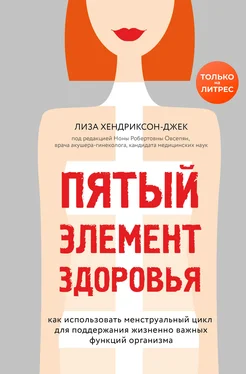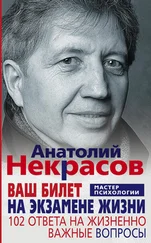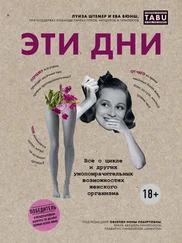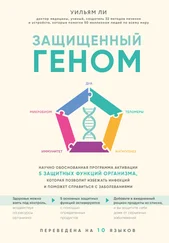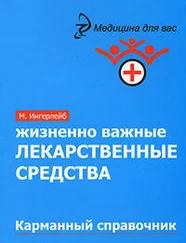68. Phillips, Katherine M., Monica H. Carlsen, and Rune Blomhoff. “Total antioxidant content of alternatives to refined sugar.” Journal of the American Dietetic Association 109, no. 1 (2009): 64–71.
69. Gill, Jan. “The effects of moderate alcohol consumption on female hormone levels and reproductive function.” Alcohol and Alcoholism 35, no. 5 (2000): 417–423; Schliep, Karen C., Shvetha M. Zarek, Enrique F. Schisterman, Jean Wactawski– Wende, Maurizio Trevisan, Lindsey A. Sjaarda, Neil J. Perkins, and Sunni L. Mumford. “Alcohol intake, reproductive hormones, and menstrual cycle function: a prospective cohort study.” The American Journal of Clinical Nutrition 102, no. 4 (2015): 933–942.
70. Schliep, Karen C., Shvetha M. Zarek, Enrique F. Schisterman, Jean Wactawski-Wende, Maurizio Trevisan, Lindsey A. Sjaarda, Neil J. Perkins, and Sunni L. Mumford. “Alcohol intake, reproductive hormones, and menstrual cycle function: a prospective cohort study.” The American Journal of Clinical Nutrition 102, no. 4 (2015): 933–942.
71. Windham, G.C., E.P. Elkin, S.H. Swan, K.O. Waller, and L. Fenster. “Cigarette smoking and effects on menstrual function.” Obstetrics & Gynecology 93, no. 1 (1999): 61–62.
72. Windham, Gayle C., Patrick Mitchell, Meredith Anderson, and Bill L. Lasley. “Cigarette smoking and effects on hormone function in premenopausal women.” Environmental Health Perspectives 113, no. 10 (2005): 1285–1290.
73. Chavarro, Jorge E., Janet W. Rich-Edwards, Bernard A. Rosner, and Walter C. Willett. “Diet and lifestyle in the prevention of ovulatory disorder infertility.” Obstetrics & Gynecology 110, no. 5 (2007): 1050–1058; Chavarro, Jorge E., Janet W. Rich-Edwards, Bernard A. Rosner, and Walter C. Willett. “A prospective study of dietary carbohydrate quantity and quality in relation to risk of ovulatory infertility.” European Journal of Clinical Nutrition 63, no. 1 (2009): 78–86; Douglas, Crystal C., Leigh E. Norris, Robert A. Oster, Betty E. Darnell, Ricardo Azziz, and Barbara A. Gower. “Difference in dietary intake between women with polycystic ovary syndrome and healthy controls.” Fertility and Sterility 86, no. 2 (2006): 411–417.
74. Chavarro, Jorge E., Janet W. Rich-Edwards, Bernard A. Rosner, and Walter C. Willett. “A prospective study of dietary carbohydrate quantity and quality in relation to risk of ovulatory infertility.” European Journal of Clinical Nutrition 63, no. 1 (2009): 78–86.
75. Chafen, Jennifer J. Schneider, Sydne J. Newberry, Marc A. Riedl, Dena M. Bravata, Margaret Maglione, Marika J. Suttorp, Vandana Sundaram et al. “Diagnosing and managing common food allergies: a systematic review.” JAMA 303, no. 18 (2010): 1848–1856.
76. Agata, Hiroatsu, Naomi Kondo, Osamu Fukutomi, Shinji Shinoda, and Tadao Orii. “Effect of elimination diets on food– specific IgE antibodies and lymphocyte proliferative responses to food antigens in atopic dermatitis patients exhibiting sensitivity to food allergens.” Journal of Allergy and Clinical Immunology 91, no. 2 (1993): 668–679.
77. Ouyang, Xiaosen, Pietro Cirillo, Yuri Sautin, Shannon McCall, James L. Bruchette, Anna Mae Diehl, Richard J. Johnson, and Manal F. Abdelmalek. “Fructose consumption as a risk factor for non-alcoholic fatty liver disease.” Journal of Hepatology 48, no. 6 (2008): 993–999; Zelber-Sagi, Shira, Dorit Nitzan-Kaluski, Rebecca Goldsmith, Muriel Webb, Laurie Blendis, Zamir Halpern, and Ran Oren. “Long term nutritional intake and the risk for non-alcoholic fatty liver disease (NAFLD): a population based study.” Journal of Hepatology 47, no. 5 (2007): 711–717; Thuy, Sabine, Ruth Ladurner, Valentina Volynets, Silvia Wagner, Stefan Strahl, Alfred Königsrainer, Klaus-Peter Maier, Stephan C. Bischoff, and Ina Bergheim. “Nonalcoholic fatty liver disease in humans is associated with increased plasma endotoxin and plasminogen activator inhibitor 1 concentrations and with fructose intake.” The Journal of Nutrition 138, no. 8 (2008): 1452–1455; Maddrey, Willis C. “Alcohol-induced liver disease.” Clinics in Liver Disease 4, no. 1 (2000): 115–131; Lackner, Carolin, Walter Spindelboeck, Johannes Haybaeck, Philipp Douschan, Florian Rainer, Luigi Terracciano, Josef Haas, Andrea Berghold, Ramon Bataller, and Rudolf E. Stauber. “Histological parameters and alcohol abstinence determine long-term prognosis in patients with alcoholic liver disease.” Journal of Hepatology 66, no. 3 (2017): 610–618.
78. Michnovicz, Jon J., Herman Adlercreutz, and H. Leon Bradlow. “Changes in levels of urinary estrogen metabolites after oral indole-3-carbinol treatment in humans.” Journal of the National Cancer Institute 89, no. 10 (1997): 718–723; Michnovicz, Jon J., and H. Leon Bradlow. “Altered estrogen metabolism and excretion in humans following consumption of indole-3-carbinol.” Nutrition and Cancer (1991): 59–66.
79. Surushe, Priyanka, Mayuri Bari, Rahul Hajare, and Anil Chandewar Swapnil Surushe. “Breast cancer and dietary Indole 3 carbinol – a review.” Asian Journal of Pharmacy & Life Science ISSN 2231 (2012): 72–80; Jain, Mohit M., Nirmala Kumari, and Geeta Rai. “A novel formulation of veggies with potent liver detoxifying activity.” International Journal of Computational Biology and Drug Design 8, no. 1 (2015): 75–86.
80. Weng, Jing-Ru, Chen-Hsun Tsai, Samuel K. Kulp, and Ching-Shih Chen. “Indole-3-carbinol as a chemopreventive and anti-cancer agent.” Cancer Letters 262, no. 2 (2008): 153–163.
81. Smith, Alma J., William R. Phipps, William Thomas, Kathryn H. Schmitz, and Mindy S. Kurzer. “The effects of aerobic exercise on estrogen metabolism in healthy premenopausal women.” Cancer Epidemiology and Prevention Biomarkers 22, no. 5 (2013): 756–764.
82. Petersen, Anne Marie W., and Bente Klarlund Pedersen. “The anti-inflammatory effect of exercise.” Journal of Applied Physiology 98, no. 4 (2005): 1154–1162; Jelleyman, Charlotte, Thomas Yates, Gary O’Donovan, Laura J. Gray, James A. King, Kamlesh Khunti, and Melanie J. Davies. “The effects of high-intensity interval training on glucose regulation and insulin resistance: a meta-analysis.” Obesity Reviews 16, no. 11 (2015): 942–961; Almenning, Ida, Astrid Rieber-Mohn, Kari Margrethe Lundgren, Tone Shetelig Løvvik, Kirsti Krohn Garnæs, and Trine Moholdt. “Effects of high intensity interval training and strength training on metabolic, cardiovascular and hormonal outcomes in women with polycystic ovary syndrome: a pilot study.” PLOS One 10, no. 9 (2015): e0138793.
83. Warren, Michelle P., and Abigail T. Chua. “Exercise-induced amenorrhea and bone health in the adolescent athlete.” Annals of the New York Academy of Sciences 1135, no. 1 (2008): 244–252; Sokoloff, Natalia Cano, Madhusmita Misra, and Kathryn E. Ackerman. (2016). “Exercise, training, and the hypothalamic-pituitary-gonadal axis in men and women.” Sports Endocrinology, vol. 47. Basel: Karger Publishers, 27–43; Wu, T., X. Gao, M. Chen, and R.M. Van Dam. “Long-term effectiveness of diet-plus-exercise interventions vs. diet-only interventions for weight loss: a meta-analysis.” Obesity Reviews 10, no. 3 (2009): 313–323.
84. Trapp, E. Gail, Donald J. Chisholm, Judith Freund, and Stephen H. Boutcher. “The effects of high-intensity intermittent exercise training on fat loss and fasting insulin levels of young women.” International Journal of Obesity 32, no. 4 (2008): 684.
85. Brand, Serge, Edith Holsboer-Trachsler, José Raúl Naranjo, and Stefan Schmidt. “Influence of mindfulness practice on cortisol and sleep in long-term and short-term meditators.” Neuropsychobiology 65, no. 3 (2012): 109–118.
86. Там же; Tang, Yi-Yuan, Britta K. Hölzel, and Michael I. Posner. “The neuroscience of mindfulness meditation.” Nature Reviews Neuroscience 16, no. 4 (2015): 213–225; Gotink, Rinske A., Rozanna Meijboom, Meike W. Vernooij, Marion Smits, and MG Myriam Hunink. “8-week mindfulness based stress reduction induces brain changes similar to traditional long-term meditation practice – a systematic review.” Brain and Cognition 108 (2016): 32–41.
Читать дальше
Конец ознакомительного отрывка
Купить книгу
